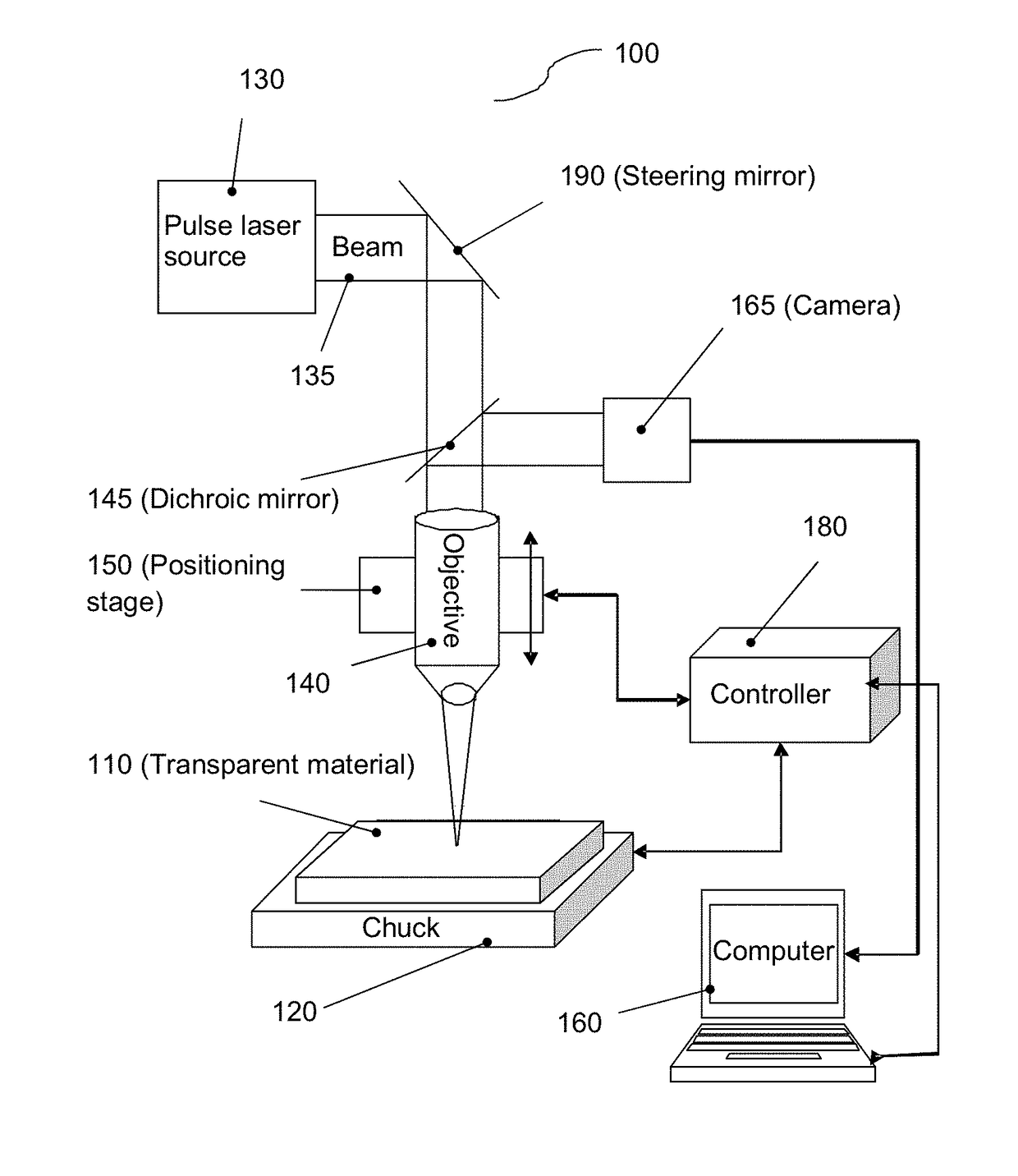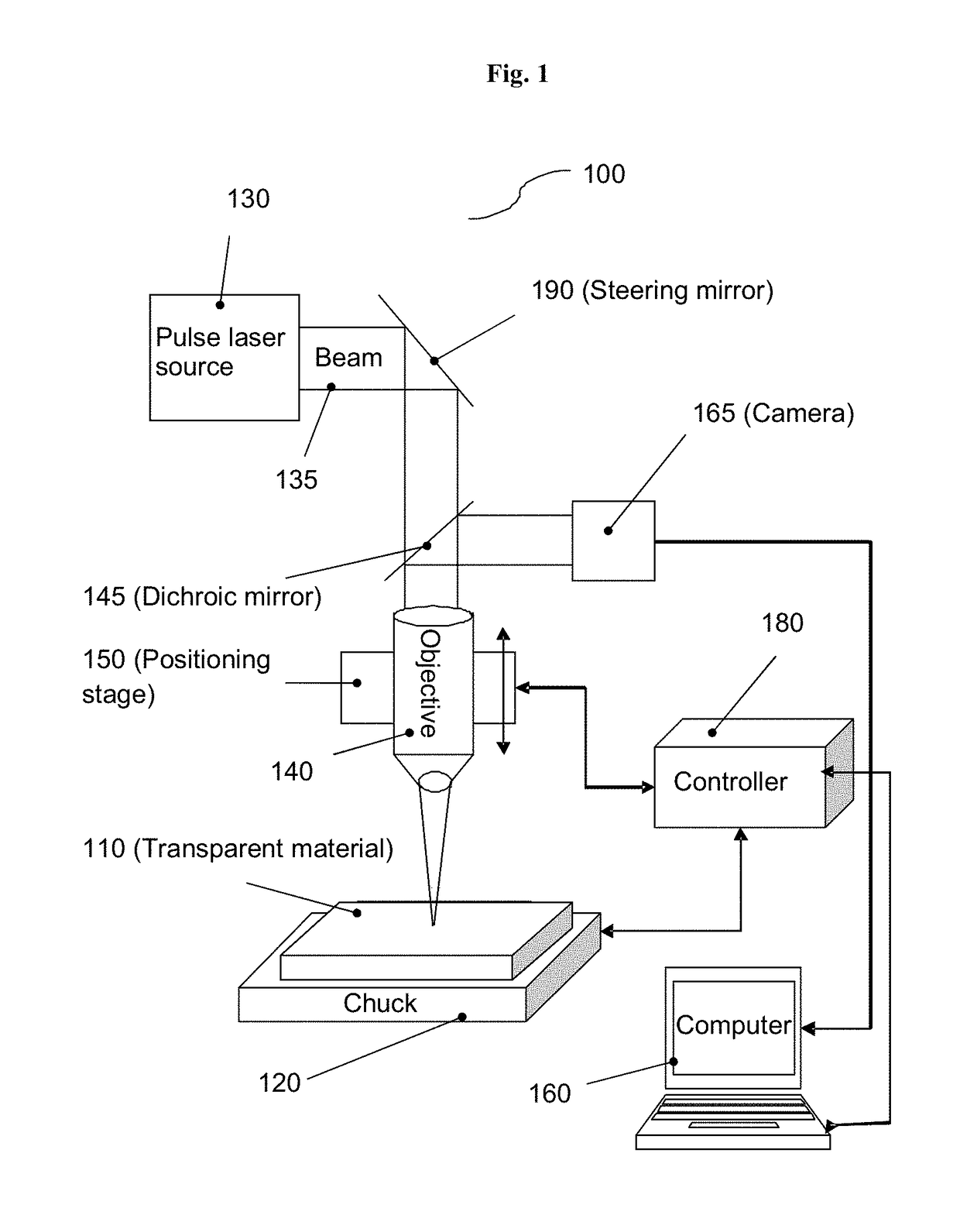Method and apparatus for the determination of laser correcting tool parameters
a laser correcting tool and parameter determination technology, applied in the direction of photomechanical equipment, instruments, originals for photomechanical treatment, etc., can solve the problems of increasing the complexity of photolithographic mask manufacturing, and increasing the cost of approach, so as to achieve the effect of reducing the amount of additional effor
- Summary
- Abstract
- Description
- Claims
- Application Information
AI Technical Summary
Benefits of technology
Problems solved by technology
Method used
Image
Examples
Embodiment Construction
[0058]This part of the specification refers to part 6 entitled “theoretical background” of the U.S. provisional application U.S. 61 / 363,352. Equations of this part are used in this application without further explanation. Some of the problems of photolithographic masks and of templates for the nanoimprint lithography are also briefly discussed in the above mentioned document.
[0059]This section begins with a brief description of the apparatus used for the correction of deficits of transparent materials. In the second part, two alternative approaches are presented to determine the at least one unknown laser beam parameter.
[0060]In the following, the present invention will be more fully described hereinafter with reference to the accompanying Figures, in which exemplary embodiments of the invention are illustrated. However, the present invention may be embodied in different forms and should not be construed as limited to the embodiments set forth herein. Rather, these embodiments are p...
PUM
| Property | Measurement | Unit |
|---|---|---|
| wavelength | aaaaa | aaaaa |
| wavelength range | aaaaa | aaaaa |
| wavelength | aaaaa | aaaaa |
Abstract
Description
Claims
Application Information
 Login to View More
Login to View More - R&D
- Intellectual Property
- Life Sciences
- Materials
- Tech Scout
- Unparalleled Data Quality
- Higher Quality Content
- 60% Fewer Hallucinations
Browse by: Latest US Patents, China's latest patents, Technical Efficacy Thesaurus, Application Domain, Technology Topic, Popular Technical Reports.
© 2025 PatSnap. All rights reserved.Legal|Privacy policy|Modern Slavery Act Transparency Statement|Sitemap|About US| Contact US: help@patsnap.com



